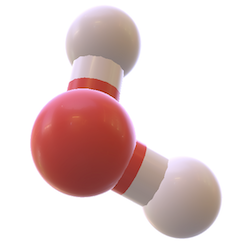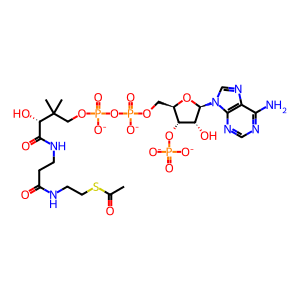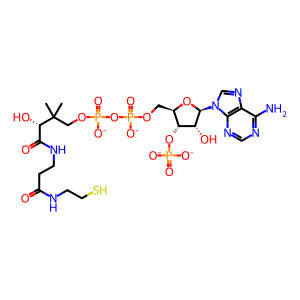Reaction: KAT6A, KAT6B-containing ING5 complexes acetylate replicative histone H3
- in pathway: HATs acetylate histones
KAT6A (Monocytic leukemia zinc finger protein, MOZ) and KAT6B (Monocytic leukemia zinc finger protein-related factor, MORF) are member of the MYST family of histone acetyltransferases, named after the founding members MOZ, Ybf2/Sas3, Sas2 and TIP60 (Borrow et al. 1996, Reifsnyder et al. 1996). The presence of a MYST domain is the only common structural motif in this family. MOZ and MORF are highly homologous (overall amino-acid sequence identity, 60%; similarity, 66%) but distinct from other family members (Yang & Ullah 2007).
KAT6A and KAT6B have intrinsic histone acetyltransferase activity (Champagne et al. 1999, 2001). Both can form tetrameric 'ING5' complexes with BRPF1 (possibly BRPF2 and 3), EAF6 and ING5. BRPF1 and EAF6 drastically stimulate the acetyltransferase activities of KAT6A/B against nucleosomal histone H3 (Doyon et al. 2006, Ullah et al. 2008). ING5-MOZ/MORF complexes acetylate only histone H3 at lysine-14.
KAT6A homozygous mice die at birth, with reduced hematopoiesis and profound defects in the stem cell compartment. These mice have no long-term repopulating stem cells and display substantial reduction in the number of multipotent cells able to form spleen colonies (Thomas et al. 2006). Chromosomal rearrangements of the KAT6A gene are associated with acute myeloid leukemia (AML), uterine leiomyomata and therapy-related myelodysplastic syndromes (Yang & Ullah, 2007).
Mutations in KAT6B are the cause of the Say-Barber-Biesecker variant of Ohdo syndrome and Genitopatellar syndrome (Campeau et al. 2012, Szakszon et al. 2013).
KAT6A and KAT6B have intrinsic histone acetyltransferase activity (Champagne et al. 1999, 2001). Both can form tetrameric 'ING5' complexes with BRPF1 (possibly BRPF2 and 3), EAF6 and ING5. BRPF1 and EAF6 drastically stimulate the acetyltransferase activities of KAT6A/B against nucleosomal histone H3 (Doyon et al. 2006, Ullah et al. 2008). ING5-MOZ/MORF complexes acetylate only histone H3 at lysine-14.
KAT6A homozygous mice die at birth, with reduced hematopoiesis and profound defects in the stem cell compartment. These mice have no long-term repopulating stem cells and display substantial reduction in the number of multipotent cells able to form spleen colonies (Thomas et al. 2006). Chromosomal rearrangements of the KAT6A gene are associated with acute myeloid leukemia (AML), uterine leiomyomata and therapy-related myelodysplastic syndromes (Yang & Ullah, 2007).
Mutations in KAT6B are the cause of the Say-Barber-Biesecker variant of Ohdo syndrome and Genitopatellar syndrome (Campeau et al. 2012, Szakszon et al. 2013).
Reaction - small molecule participants:
CoA-SH [nucleoplasm]
Ac-CoA [nucleoplasm]
Reactome.org reaction link: R-HSA-3318486
======
Reaction input - small molecules:
acetyl-CoA(4-)
Reaction output - small molecules:
coenzyme A(4-)
Reactome.org link: R-HSA-3318486


